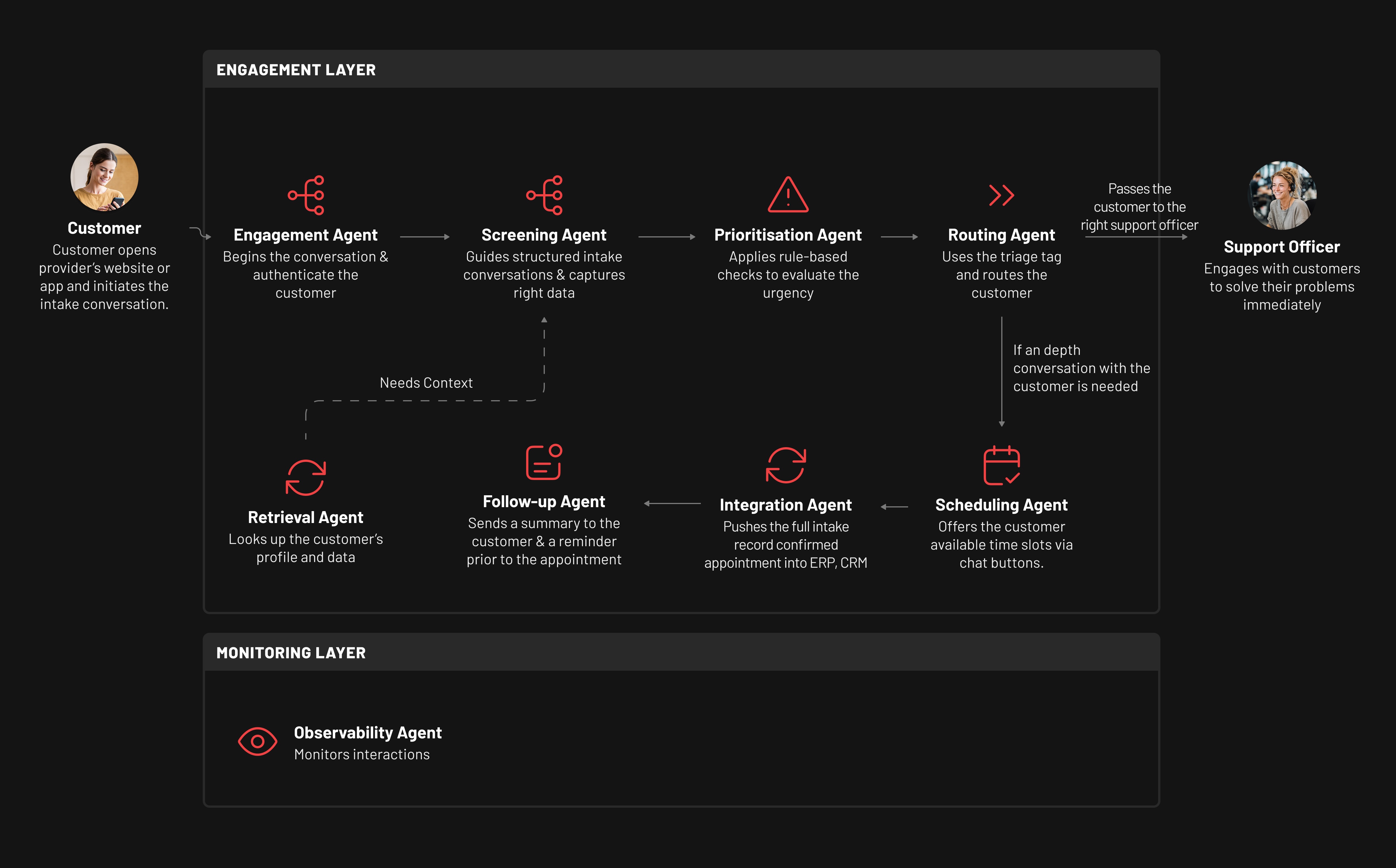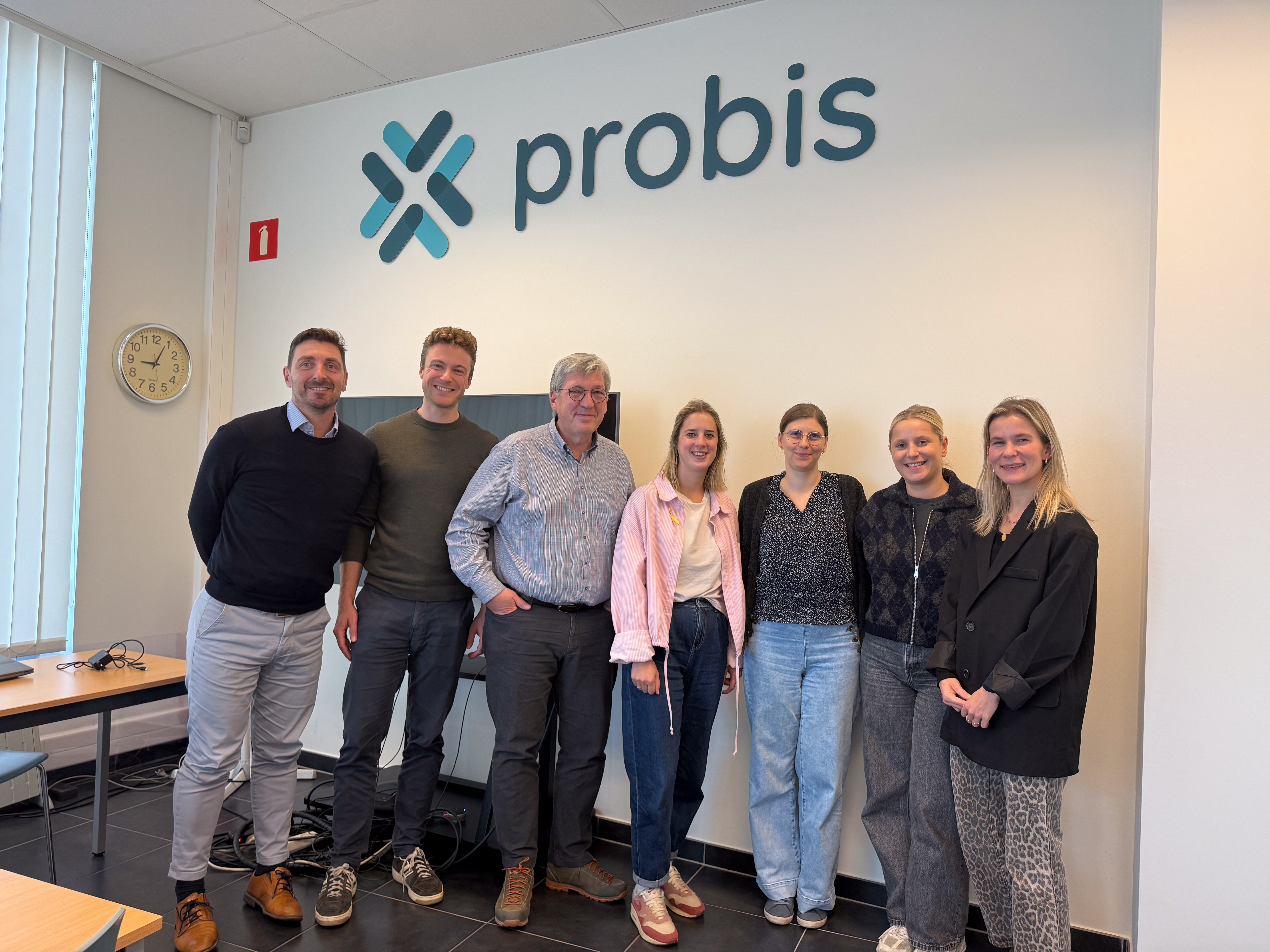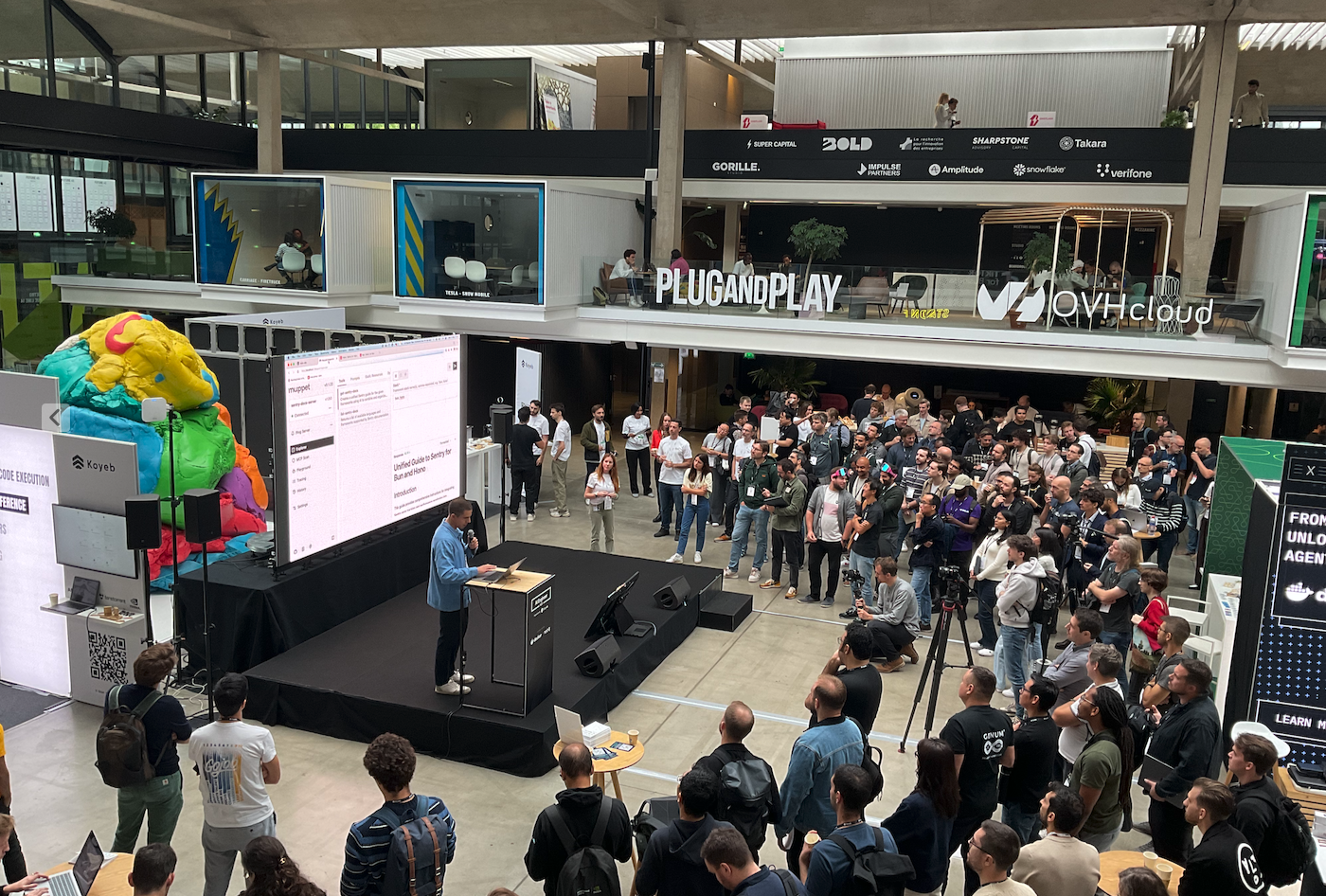In sectors like telco, banking, insurance, and healthcare, support teams are buried under a mountain of customer interactions. But despite thousands of calls, chats, and emails, companies often still don’t really understand what their customers need.
Whether someone is disputing a charge, applying for insurance, reporting a network outage, or scheduling a check-up, every moment spent on admin noise is a moment lost from solving their real problem.
Support teams are flooded with inbound requests, missing context, and inconsistent data collection. Customers get frustrated. Domain experts waste time digging for details instead of solving problems. Meanwhile, organisations spend a considerable amount of money on sub-optimal services and lose the opportunity for personalised service, faster resolutions, and operational efficiency.
What’s Standing in the Way
- Unstructured Conversations: Customers explain their issue in their own words—support officers scramble to translate that into something actionable.
- Repetition & Fragmentation: Every channel—email, phone, chat—asks the same questions, with no continuity or shared memory.
- High employee turnover: Support officers spend more time capturing problems than solving them, dragging morale and productivity.
- Missed Opportunities: Without structured intake, insights are lost, upsell triggers are missed, and issue resolution slows down.
Solution: Agentic AI Systems for Smart, Frictionless Intake
Within the customer intake process, multi-agent AI systems can now handle entire intake tasks within your customer service process, without sacrificing the professionalism, compliance, adaptability, and empathy customers deserve.
The goal isn’t replacing human expertise, but rather freeing the support team from customer intake which is a routine, repetitive part of the support process, so they can focus fully on offering better support for the customers.
These AI systems capture the right data, in the right format, at the right time, then hand it over to human experts or downstream systems for decision-making, resolution, and personalised service.
At the core, a modular system of specialised AI agents collaborates seamlessly to manage intake processes efficiently:
- 24/7 Conversational Intake: Customers use conversational AI available 24/7 via chat or voice on their device of choice. The Engagement and Screening agents ask questions to identify the intent and capture customers’ information clearly and consistently, ready for support officers' review.
- Call Transcription & Summarisation: When customers prefer human interaction over chat, the transcription agent automatically converts recorded intake calls into structured intake documents. This module removes manual note-taking burdens from support officers, allowing them to fully focus on the conversations.
- Knowledge Retrieval & Contextualisation:
Retrieval agent securely accesses previous customers’ interactions, profiles, and relevant documents, providing immediate context for support officers and eliminating repetitive questions for customers. - Clear Triage & Intelligent Routing: Routing and prioritisation agents apply explicit, deterministic rules to assess urgency clearly and objectively. Critical conditions are flagged immediately, ensuring timely handoff to the right specialist or department.
- Automated Reporting & Documentation: Reporting agent automatically generates structured intake reports exactly matching existing providers' schemas, dramatically reducing the administrative overhead and manual data-entry tasks traditionally done by support officers.
- System Integration & Coordination: Integration agent automatically pushes structured intake data into operational systems (after experts' validations), like EPR, CRM or scheduling software, ensuring smooth data flows without redundant manual entries.
- Observability & Continuous Improvement: Observability agents systematically monitor system performance (routing accuracy, latency, escalations), capturing clear feedback loops from domain experts for continuous refinement and improvement.

Industry Applications: Where Structured Intake Pays Off Fast
Any industry that deals with high volumes of customer requests, case intake, or service initiation can benefit from structured, agent-driven workflows. Here are some examples to illustrate how AI Agents can elevate the intake process across industries:
🛰 Telecommunications & ISPs
- Outage-related calls are one of the biggest sources of inbound volume. AI agents can instantly identify the customer’s location and check network status, automatically logging known issues and escalating only complex cases, cutting agent load and deflecting up to 70% of routine requests.
- Plan changes and upgrades can be automated through guided conversations that capture usage patterns, eligibility, and intent. Customers get personalised plan recommendations without waiting on a human agent, driving higher ARPU and freeing up sales staff.
- Billing disputes are streamlined by collecting all relevant info upfront: invoice references, payment confirmations, and reason codes. The structured data is routed straight to the billing team, reducing resolution cycles from days to hours and minimising churn risk.
💳 Banking & Fintech
- KYC onboarding is accelerated by AI agents that capture ID documents, validate data, and pre-screen for compliance issues before handing off to a human reviewer. This reduces onboarding time from hours to minutes, accelerating deposits and customer activation.
- Loan requests are pre-qualified automatically: AI agents gather income, assets, and loan intent, and apply business logic to assess eligibility. Only viable cases reach loan officers, cutting processing time and boosting conversion rates.
- Fraud claims are triaged in real time. AI agents verify transactions, check IP and device data, and distinguish real fraud from false positives locking cards immediately when necessary, while reducing unnecessary panic.
🏢 Insurance (P&C)
- Claims intake (FNOL) becomes instant and intuitive. AI guides customers through damage description, photo uploads, and policy lookup in one seamless chat, allowing assessors to act the same day and reducing payout delays.
- Policy change requests—such as coverage updates or address changes—are collected in a structured flow, validated in real time, and routed automatically. That reduces human touches and enables upselling of related policies.
- Disaster events can create surges in claims. AI triages submissions based on geography and severity, prioritising high-risk cases and scheduling field visits intelligently, preserving SLAs and preventing operational overload.
🏥 Healthcare Providers
- Appointment scheduling is fully automated. AI verifies insurance, captures symptoms, and offers real-time appointment slots reducing front-desk pressure and improving clinic utilisation.
- Symptom triage is handled through deterministic, medically validated flows. AI screens for red flags and only escalates true urgenciessaving nurses time and improving response prioritisation.
- Referral intake is transformed by pulling historical records, structuring the referral reason, and pushing everything directly into scheduling and EHR systems, shortening wait times and reducing patient drop-off.
These are just a few high-impact examples but the potential goes far beyond telecom, banking, insurance, and healthcare. Any industry that deals with high volumes of customer requests, case intake, or service initiation can benefit from structured, agent-driven workflows. Whether it's logistics, government services, legal firms, education, or B2B service providers wherever information needs to be captured clearly and routed efficiently, this approach applies.
The Outcome: Faster Resolution, Smarter Operations, Stronger Relationships
For Customers:
Customers get instant access to a clear, structured intake experience available 24/7 in their language, on their preferred channel. No more repeating themselves. No more uncertainty about where to go or what’s next. They’re heard the first time and guided toward resolution, not frustration.
For Support Officers:
Agents receive complete, contextualised cases, already prioritised and routed, so they can focus on resolving issues instead of decoding them. This shift reduces handling time, lowers burnout, and improves employee satisfaction by letting agents do what they’re trained to do: help people, not chase forms.
For Decision-Makers:
Leaders gain visibility, consistency, and control. Every intake is structured and measurable. Operational blind spots close. CSAT improves. Support costs drop. And digital transformation finally delivers tangible ROI—not by replacing people, but by amplifying them.
The Bottom Line
This isn’t about automating support. It’s about removing friction from the start of every customer journey. Multi-agent AI transforms chaotic intake into a structured, intelligent gateway, one that accelerates resolution, empowers support teams, and builds trust at scale.
The architecture is modular. The logic is customizable. And the return on investment scales with every interaction you streamline.















